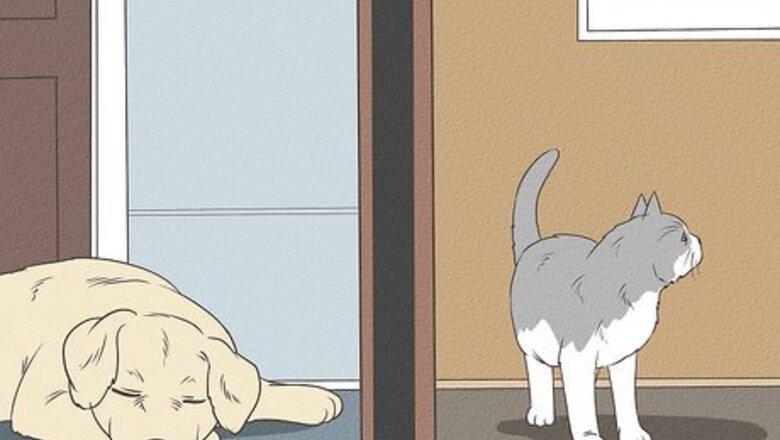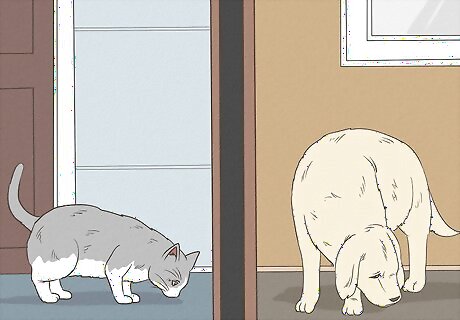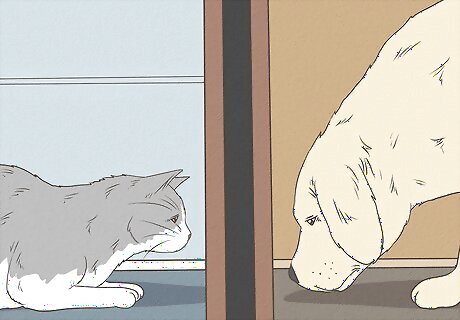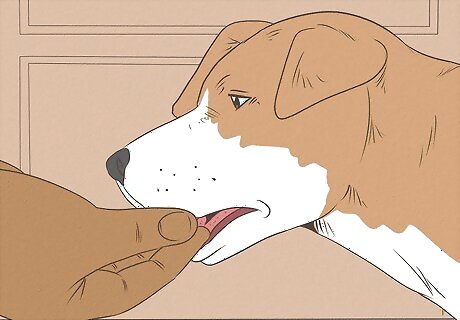
views
Introducing a Dog and Cat for the First Time

Go slow. Do NOT just let your dog chase your cat around. Keep the pets separate at first, waiting 3 or 4 days before actually introducing the animals face to face. Animals need time to get to know each other's smells and to get to know new homes before they can deal with getting to know another animal. Cats and dogs are much more likely to fight or be unhappy if you try to force them together suddenly. Keep them in separate rooms and out of sight of one another until they are both calm. Begin mixing the animals smells by stroking the cat then stroking the dog and vice versa (with pets in separate rooms).

Alternate the rooms you keep the animals in. This is so they can sniff where each other has been without the other animal being present. Smells are a very important way that animals get to know each other. Let your animals get to know the other's smell before they actually get to know them face to face. Try rubbing a towel on your dog and then putting the towel under your cat's bowl. This will help your cat get used to the dogs smell and accept it.

Let the cat and dog smell each other under the door dividing them. This will help them associate the new smells they are smelling with a specific animal, even if they can't actually see it. Try feeding the cat and dog on separate sides of the same door. This will force them to adjust to the smell of the other animal.

Wait to introduce your cat and dog until the cat seems relaxed and ready. If the cat is frightened and runs and hides whenever the dog gets near the door to their room, you need to give the cat more time. When the cat is adjusted to the smell and sounds of the dog, it may be time to let them see each other.

Hold your cat in your arms until it is calm and relaxed. Then ask a family member or friend to slowly bring your dog on a leash into the room. Gradually bring the dog closer in small steps, waiting for your cat and dog to both settle down as each step of the way before getting closer. Do not let the animals make physical contact with each other, just get them used to the presence of the other. Be sure to hold the cat only if it is happy to be held. Wear long sleeves to protect your arms from scratches. Another option is to have the dog or cat in a crate while keeping the other animal loose. This will guarantee that there is no physical contact between them when they first meet.

Show your pets equal amounts of love as you introduce them to each other. Animals, like people, get jealous when 'the new kid' gets more attention than them. Show both of your pets that they are loved by you and that the other animal is not feared by you.

Separate your pets once again. Don't force them to interact for too long, this will just exhaust them, which can lead to conflict. Make sure the first meeting is a good one by keeping it brief and pleasant. Gradually increase the lengths of these sessions.

Continue to have your dog and cat interact until they are relaxed in each other's presence. Once the cat seems comfortable enough, keep the dog on a leash but let the cat go loose in the room. After several weeks of this, your dog should be trained not to go after the cat, as so you can let the dog off the leash as well. You can also use pheromones, available through your veterinarian, to help both animals stay calm and relaxed. Ask your veterinarian if he or she thinks that the use of synthetic hormones could help your pets during their adjustment period.
Adjusting Your Pets to Life Together

Separate your pets when you are not home or with them. You should do this for quite awhile so that your cat and dog do not injure each other.

Redirect negative behaviors that your dog directs at your cat. This includes rough play and barking. Give your pup another activity or do some obedience training with it instead of letting it focus on the cat. Try to avoid scolding your dog in this circumstance. Keep the situation positive and your dog is more likely to have positive associations with the cat in the future.

Reward and praise your dog for good behavior around the cat. This can include friendly behavior or simply ignoring the cat. Make it so that when the cat comes into the room it's enjoyable for your dog to treat the cat well, not to be aggressive or too attentive to it. Say, "Oh, look, Puppy, Kitty's here! Yay!" and sound very happy. Then give the dog a small training treat. Your dog will soon learn to associate pleasant feelings with the cat.

Provide your cat with a place where it can always get out of reach of your dog. This can include a cat tree or a baby gate across a doorway, whatever allows your cat to escape. Cats will generally attack a dog only when backed into a corner with no way to avoid the dog.

Have realistic expectations. If your dog or your cat has never lived with another animal before, it will not immediately know how to deal with the situation. In addition, you will not know until they are introduced whether your dog will see the cat as play, prey, or a curiosity and you will not know whether your cat will see your dog as a curiosity or a threat. Understanding that you may have a long period of acclimation between the two will help you to persevere with the process of making them get along.


















Comments
0 comment